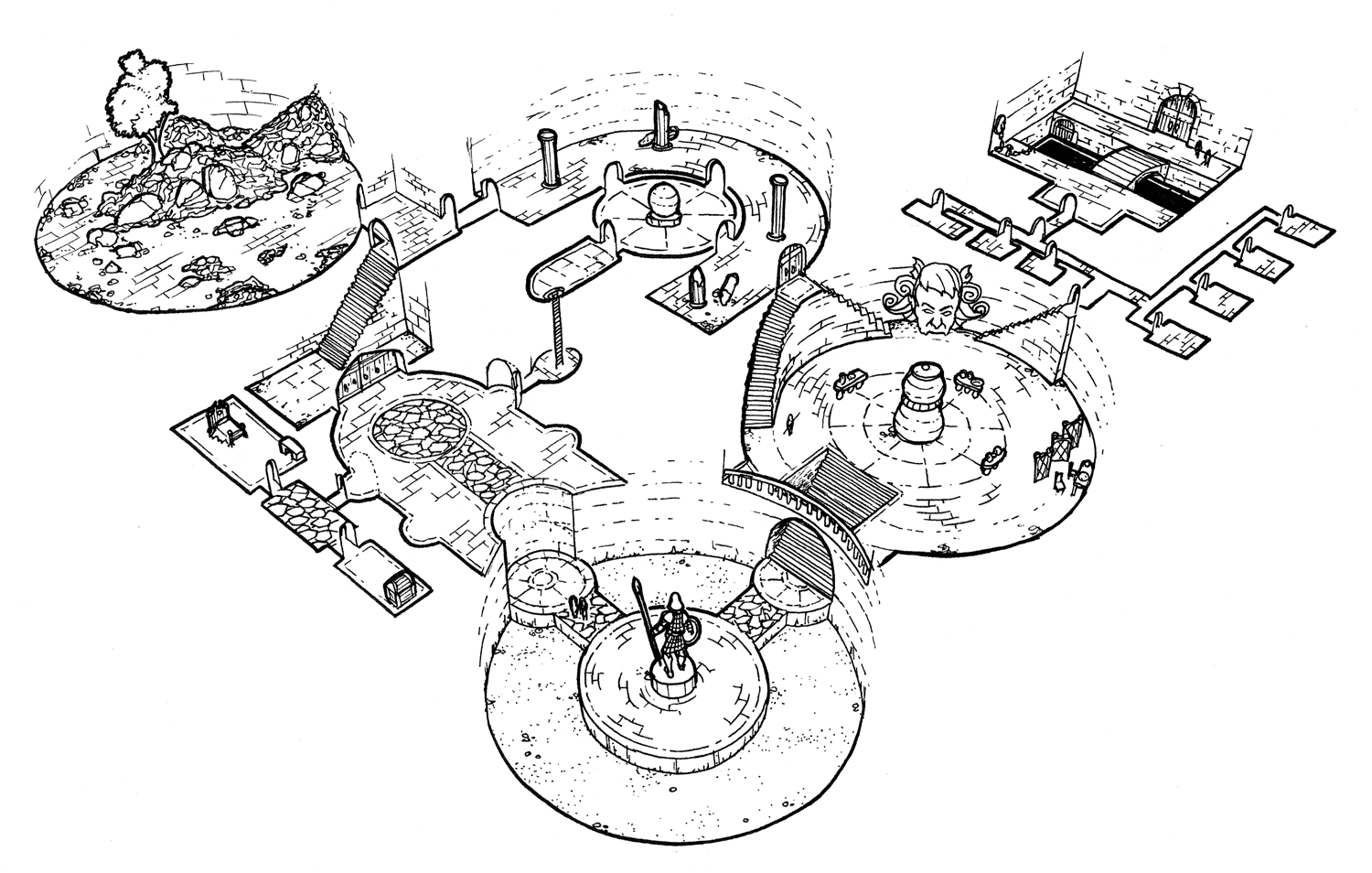Simultaneous Interconnected Dungeon Crawl

Alternate Title: How to run a game with 12 players and 3 GMs.
We’ve talked about playing RPGs with just two people, but what about with 15 people? This past New Years I gathered 15 friends together and we tried a little experiment: 3 simultaneous, interconnected games.
- Three GMs running a game for 4 players.
- Each game is based on the same adventure, but differs in small ways.
- Some traps/monsters can switch players between games, mixing up the groups.
- As soon as one group reaches the ultimate treasure, a countdown starts for ALL groups, creating a hectic race to the end. Only one group makes it out alive with the treasure!
How did it go?
It went well! All players got to interact with one another, and it was easier than having all of the players in one game.
After the adventure ended players and GMs alike got to share stories of what happened in their games, or what they missed out on.
The games lasted about 3 hours, and everyone who showed up had a blast. This is definitely something I want to try again. It was about as tricky as prepping for a normal game session; we just had to get 3 GMs and 12 players in the same room at the same time.
How to pull it off:
1) Work together with the other GMs. The collaboration doesn’t have to be SUPER tight, I think we spent a total of 30 minutes brainstorming together and making sure we were all on the same page. Part of the fun is not knowing exactly what’s happening in the other games.
2) Pick an adventure. It should be a straightforward adventure that each GM can tweak as needed. We ran a 6-room dungeon from the excellent Michael Prescott.

3) Pick a system. Ideally it’s a system that all GMs are comfortable with. We used Into the Odd by Chris McDowell. It plays fast, and was easy to pick up for everyone involved.
4) Customize. Each GM should tweak the adventure a bit. All of our games had the same room layout, but each room was a little different. For example:
- One of the games was sci-fi, and the first room was a flickering light bridge.
- Another was pulpy adventure, and the room contained a frayed rope bridge.
- The other game kept closest to the original adventure with a rickety wooden bridge.
5) Switching Traps/Enemies. Each GM should add a few ways that players switch between games. It could be a trap, a strange item, or a special monster attack. We all tried to make it so that every game would switch once or twice during the session.
Players switch with someone from a different game so that there is always the same number of players in a game. This also has the added benefit of messing with player groups. Maybe the character with the rope is switched away, and players have to work with their new party member to find a way across the chasm.
6) Final Countdown. To keep games from ending at different times you should have some kind of final countdown. For us it was when any group entered the final treasure room. As soon as that happened, all of the GMs started a 15 minute real-time countdown and described their dungeon shaking or crumbling.
This way all the games end at the same time, and it creates a fun competition between the different groups. Who will make it out alive with the dungeon?

7) Create a Timeline. Pacing is going to be the trickiest thing to keep consistent. We set goals for one another, things like “45 minutes in, the players should have gotten past the first two rooms.”
8) Give and Take. Items that one GM gave a player could easily make their way into someone else’s game. GMs don’t need to all build their dungeons together, but it helps to skim a shared google doc. Bring up any red flags, “Hey, I see you give the players some plasma grenades…that might mess with my aztec skeleton boss.”
9) Generate Characters. I rolled up and printed 6 random characters for each game, in keeping with the different settings. When we gathered all the players together we could just hand out characters. This also helped randomly sort who played in which game. “Oh, you’re the robot. That’s in the sci-fi game with David.”
Our Notes for the adventure, if you want nitty gritty details.
Good luck!
Our group had a really fun time with it, and it’s definitely something I will try to organize again.
If you do run something like this, let me know how it goes!